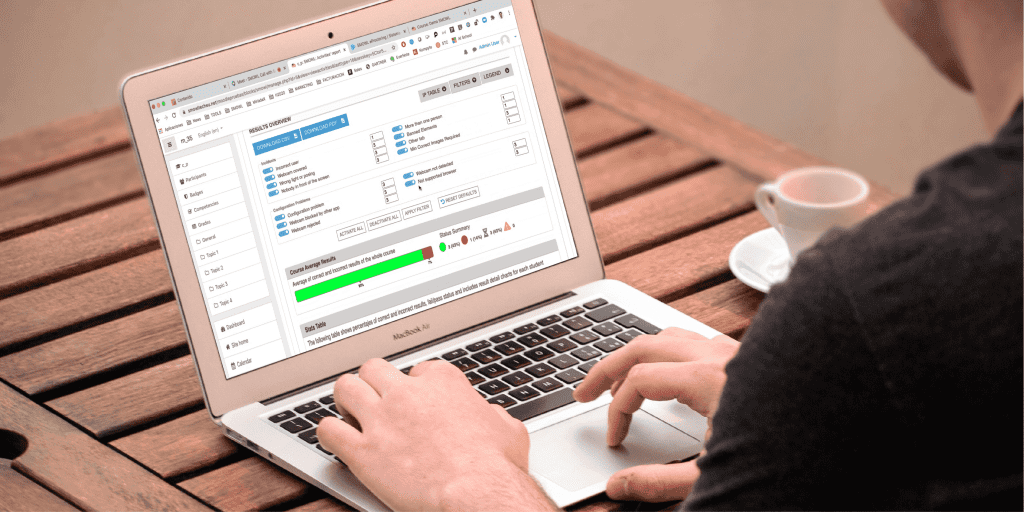
How To Implement a Learning Management System
As online Learning Management System has gone mainstream, it’s never been more important to settle on an academic Learning Management System (LMS) tailored to your institution’s mission and goals. But with the myriad choices available lately , that would be a frightening task. We walk you thru a number of the foremost powerful LMS and online learning platforms available for both K-12 and better education.
Online Learning Management System appears to possess reached a tipping point. the foremost recent Distance Education Enrollment Report from Digital Learning Compass revealed that 30 percent of scholars at U.S. degree-granting, higher-education institutions enrolled in a minimum of one online course, and nearly half that population enrolled entirely in online courses. Meanwhile, the foremost recent Inside Higher Ed Survey of college Attitudes on Technology found that 42 percent of college respondents had taught a totally online course for credit—that’s up three points from last year and nine from 2013.
But what exactly does online learning look like? even as an in-person class encompasses both the 12-student graduate seminar and therefore the 400-person lecture, online education takes many forms. Some courses feature blended or flipped classrooms that integrate online work into in-person courses. Others are fully online and depend on a mixture of real-time (synchronous) and pre-recorded (asynchronous) lectures, activities, and assessments. And still others make in-person courses publicly available without academic credit as Massive Open Online Courses (Eleapsoftware)
Benefits Of Learning Management System

Whatever form online education may take, educators and administrators generally depend on some quite LMS to develop and assign course content, track student progress, and measure and report student outcomes. the tutorial LMS space has matured considerably since i started covering it several years ago. The market has consolidated around a couple of major vendors, and thereupon concentration there’s greater uniformity in design and features. Today, most LMSes are responsive, highly interoperable, and cloud-hosted.
Nevertheless, students and teachers can still choose between a variety of “LMS-lite” platforms, particularly within the K-12 space. i select the term “online learning platforms” tactically, to encompass both educational LMS, also as learning tools and platforms which will integrate with those systems or function minimalist alternatives to them.
Any discussion of online learning need to be grounded with an understanding of the strengths and limitations of every tool or platform. even as important, however, is that the got to think clearly about the culture, values, and resources of your institution. as an example , Instructure Canvas might well serve the University of Central Florida, but it’s likely overkill for Harlem Academy (which embraced Schoology). Both platforms are Editors’ Choice winners, except for different reasons. We help explain a number of those distinctions and supply students, teachers, and administrators with an onramp to online education.
The Higher-Education Space
In education , the shift toward online learning is probably less a testament to innovation than a response to exigency. As states have de-invested publicly colleges and universities, students and their parents have borne rising tuition and repair costs. Policymakers have embraced community colleges and online education schemes as vehicles to drive down costs, increase curricular flexibility, and expand access to education .
In adopting online education schemes , college and university administrators must balance innovation with integration. many faculties have already invested in such technological infrastructure. The LMS emerged from education with distance education efforts like The Open University and NKI Distance Education Network. Many colleges and universities adopted Blackboard Learn within the late 1990s or D2L Brightspace within the early 2000s. Switching platforms would require support for and maintenance of existing courses. Thankfully, a shift toward greater interoperability means schools don’t necessarily need to choose. for instance , Pearson’s online homework, tutorial, and assessment products (MyLab & Mastering) are often integrated into all four of the main educational LMSes—Blackboard Learn, D2L Brightspace, Moodle, and Instructure Canvas.
Those “big four” increasingly represent the LMS higher-education market because it exists within the U.S. and Canada. consistent with Phil Hill’s most up-to-date report (Fall 2017), 87 percent of institutions and 91 percent of student enrollments depend on either Blackboard, Canvas, Moodle, or D2L Brightspace. While Blackboard remains the foremost popular LMS (28 percent of institutions and 37 percent of enrollments), Canvas is hot on its heels, accounting for 21 percent of institutions (up from 17 the previous year) and 27 percent of enrollments. While Moodle is employed by more institutions than Canvas (25 percent), it accounts for less than 12 percent of enrollments, which suggests that it’s hottest with smaller institutions. Meanwhile, D2L continues to secure new adopters: It’s now employed by 13 percent of institutions (up from 11) and 15 percent of enrollments.

